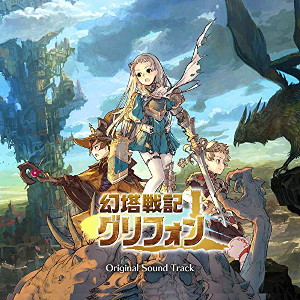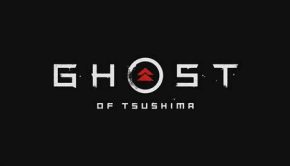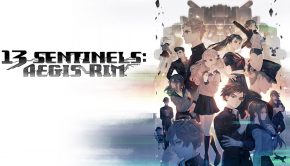The Mystic Tower Griffon Original Sound Track
 |
Album Title: The Mystic Tower Griffon Original Sound Track |
| Record Label: Basiscape Records |
|
| Catalog No.: BSPE-1082 |
|
| Release Date: June 28, 2019 |
|
| Purchase: Buy at iTunes |
Overview
The Mystic Tower Griffon Original Sound Track is the latest release from Basiscape, for the mobile game of the same name, and features compositions by Mitsuhiro Kaneda, who served as the lead composer for the soundtrack, Yoshimi Kudo, and Azusa Chiba. How does this compare to some of their other works together?
Body
The album opens up with “Trailer,” a short orchestral tune that is predominantly strings and gives off an adventurous tone while “Title,” dials things back with dulcimer, woodwinds, strings, and brass giving it a magical sound, in some ways reminiscent of Dragon’s Crown. There’s a jazzy “Character Creation” theme that combines ambient synths and choral notes for a peaceful effect while “Chat Lobby” blends upbeat acoustic guitar with flute, piano, and bagpipes for a rustic, Celtic melody that manages to shine. “Home Shop” is full of piano, strings, acoustic guitar, and accordion that makes for a homey soundscape but is a bit eclectic in execution. “Battle Standby” blends orchestra with dulcimer for an adventurous and motivating soundscape.
Of all the music featured in the game, the various stage/area themes are where it truly shines. “Caasimolar Tower Wall” features hand drums, strings, evocative vocals, and acoustic guitar that create a rustic and adventurous tone through a super fun melody and an excellent usage of strings. Another rustic tune is “Valefar Plain,” featuring bass guitar, accordion, twangy electric guitar, woodwinds, keyboards, and acoustic guitar with an extremely catchy melody, particularly during the sections with a bit of Spanish influence. The result is an excellent tune reminiscent of Wild Arms. “Aim Great Forest” captures the forest sound quite well with percussion, bright woodwinds, strings, and accordion that elevates the melody while the addition of the piano as a transitional element, and later a more prominent instrument, that gives off a sense of the mystical and playful. Much like a mountain, “Stolas Mountain Range” features a heavier percussive sound while piano, flute, strings, bagpipe round out the tune, giving it a jazzy tone that has an air of intensity about it. “Fort Asmoday” is more militaristic in nature, with strings and brass giving off an ominous and tense atmosphere. While it is certainly a bit more of a typical Basiscape sound, the harmonies and melodies are quite strong.
An unused tune, “Tropical Rainforest (unused)” blends a myriad of percussion elements with sitar and woodwinds alongside some electronic elements. Its soundscape is lush and exotic, leading to an exquisite atmosphere overall. The feeling of ice is captured in “Foras Cavern,” through its use of piano and synthesizers, giving it an ethereal sound while also capturing a sense of tension. Delicate mallet percussion and strings help add mystery to the overall piece. Aquatic sounding in nature is “Forneus Trench,” combining light electronic components, such as synth, with strings, piano, and a soprano boy’s vocals, all of which help to reinforce the delicate melody featured in the piece. One of the more disappointing area themes is “Phenix Volcano,” blending dulcimer, tense strings and brass, with percussion. While the atmosphere is to be commended, the melody is certainly a bit lacking. Lastly, “Morax Great Lighthouse” blends female choir, intense strings work for a dramatic effect. It has a typical sound related to more action oriented pieces, but the delicate piano and woodwind sections help break the tension with their delicate and airy contributions.
Of course, there are a variety of battle themes present on the release as well. “Boss Battle 1” is a piano intensive tune with bass guitar, strings, and percussion. The end result is invigorating and features a great melody, in some ways reminiscent of something that Masashi Hamauzu might conjure up, but still an original take. More typical in approach is “Boss Battle 2” with its dramatic brass heavy melody and choir. Its slow tempo does help give it some of that added flair, but it pales in comparison to some others on the soundtrack. “Match 1” is jovial and jig-like, with bright woodwinds, accordion, acoustic guitar, and bagpipes, resulting in a fun tune overall. “Match 2,” with its piano, strings, and saxophone leans towards the jazz oriented soundscape while “Match 3” relies, once again, on a typical militaristic orchestral sound that fails to stand out in terms of originality. Typical militaristic orchestral approaches continue with “Raid Boss Normal Battle (unused)” and “Raid Boss – Raid Boss Battle (unused),” the latter of which is helped by its strong melody.
There are also some event themes surrounding various holiday events. “Mischievous in nature with a peppy jazz sound is “Halloween” while “Christmas” is almost hymn-like in approach, helping to capture the religious implications of the holiday as well as wintry weather associated with the holiday. Lastly, “New Year” boasts a strong melody featuring plenty of traditional Japanese instruments. These tunes are nice additions to the soundtrack.
Summary
In the end, The Mystic Tower Griffon Original Sound Track is quite solid. The more menu based themes provide a variety of soundscapes, generally succeeding. Likewise, the area themes, with few exceptions, manage to be the highlight of the album. The same could be said for the battle themes that veer away from the typical orchestral sound. Fans of Basiscape’s work, especially those with a diverse array of soundscapes, will certainly find something to enjoy on this album.
Do you agree with the review and score? Let us know in the comments below!
4
Posted on August 13, 2019 by Don Kotowski. Last modified on August 13, 2019.














